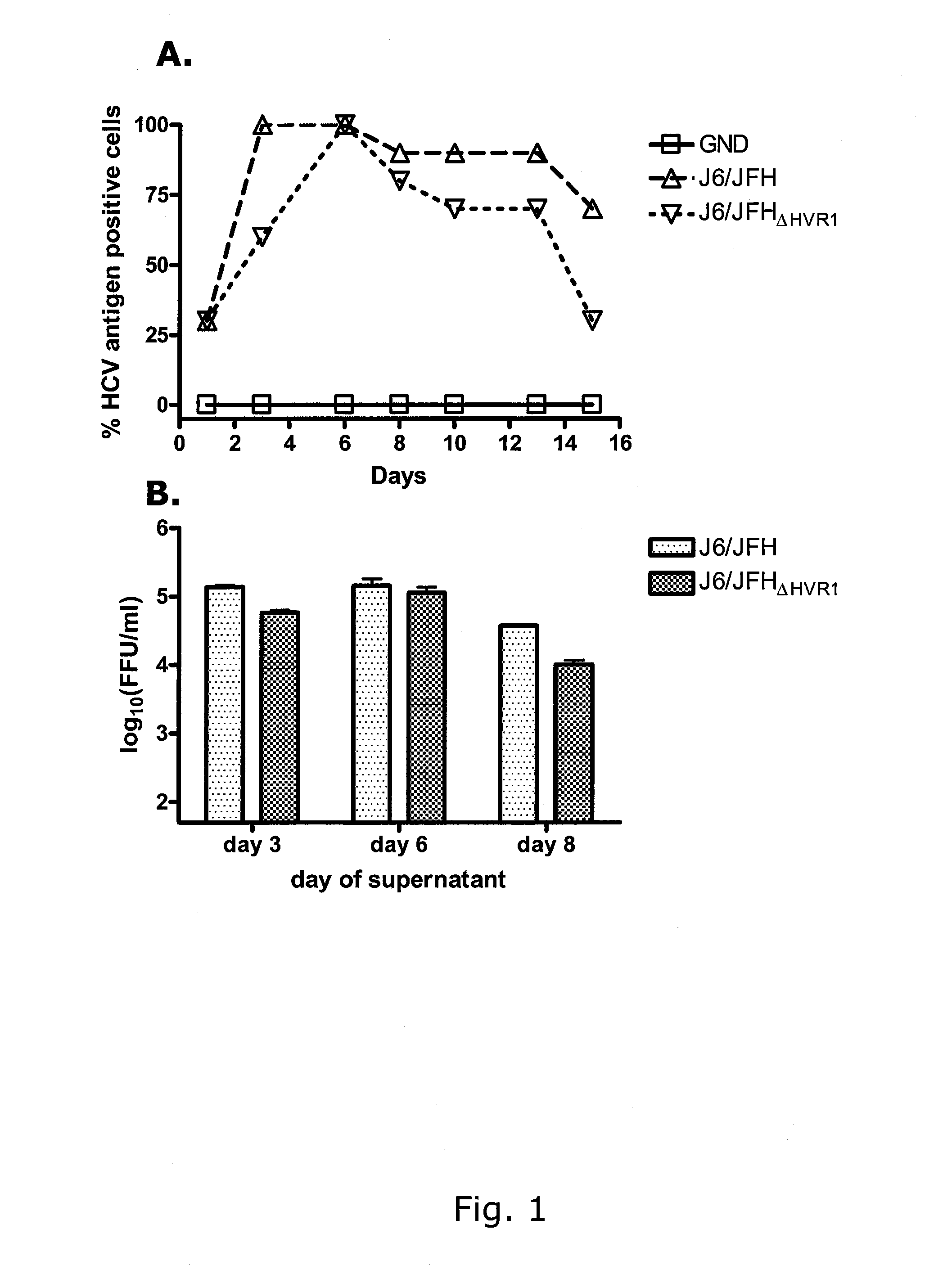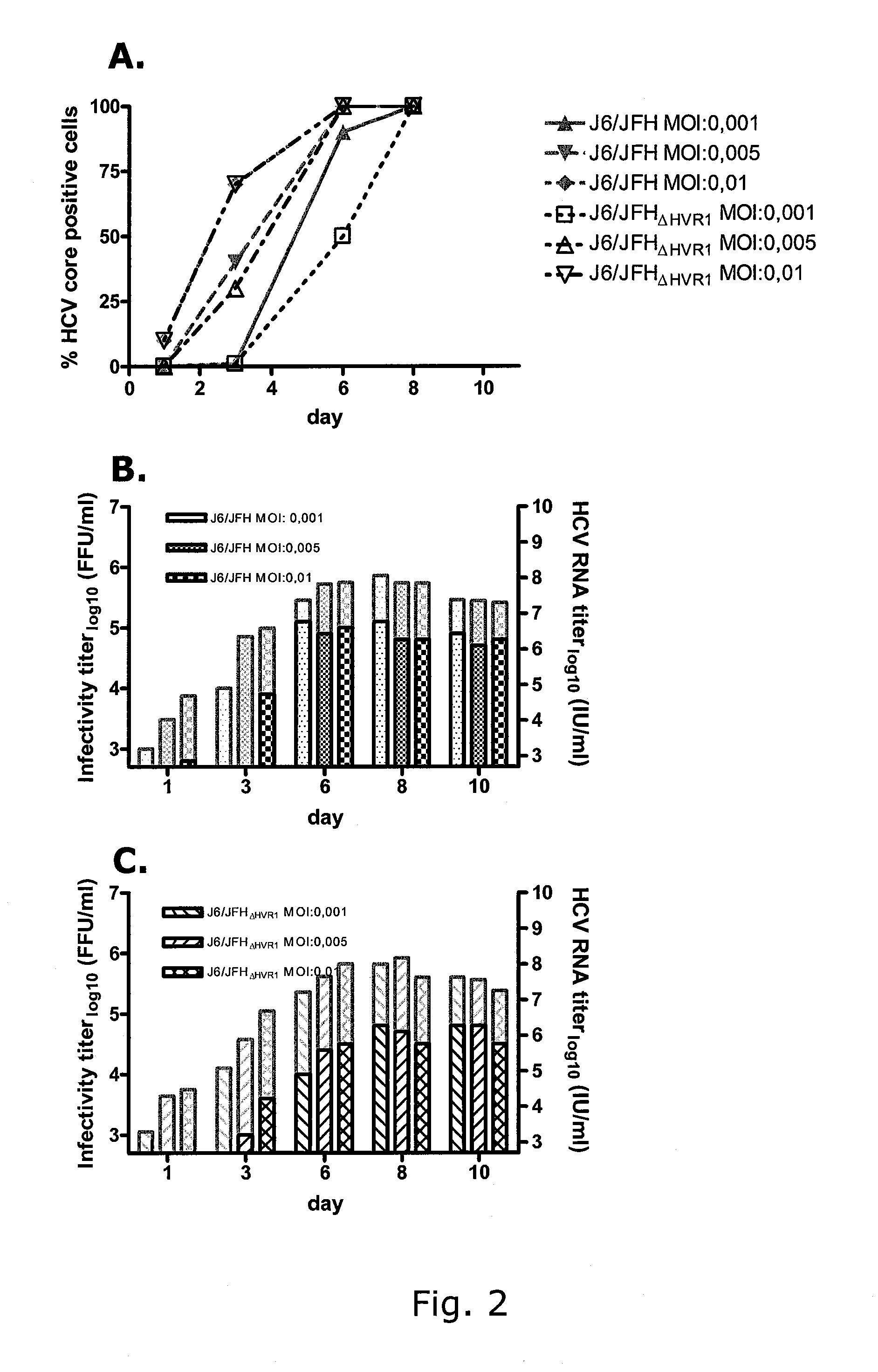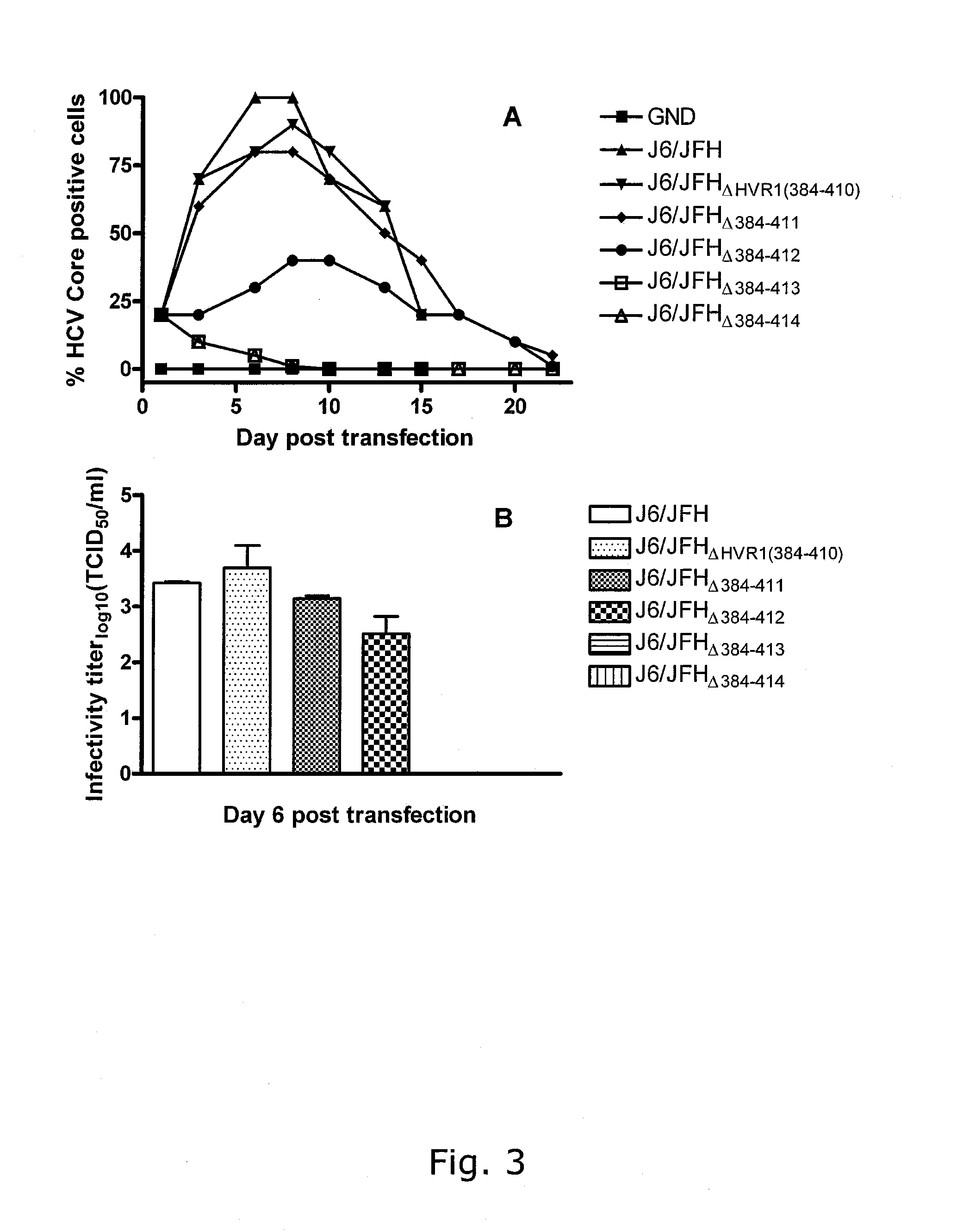INFECTIOUS GENOTYPE 1a, 1b, 2a, 2b, 3a, 5a, 6a and 7a HEPATITIS C VIRUS LACKING THE HYPERVARIABLE REGION 1 (HVR1)
- Summary
- Abstract
- Description
- Claims
- Application Information
AI Technical Summary
Benefits of technology
Problems solved by technology
Method used
Image
Examples
example 1
[0337]Deletion of HVR1 from genotype 2a virus J6 / JFH does not result in significantly reduced viral infectivity and does not incur the need for adaptive mutations.
[0338]The 81 N-terminal nucleotides of the HCV envelope E2 gene, coding for the 27 N-terminal amino acids of the E2 protein, were deleted from pJ6 / JFH yielding the plasmid pJ6 / JFHΔHVR1 (SEQ ID NO 2 and 8). After transfections of Huh7.5 cells with RNA transcripts of pJ6 / JFH and pJ6 / JFHΔHVR1, the percentage of infected cells was estimated by immunostaining and FFU infectivity titers were measured in cell culture supernatants derived on days 3, 6 and 8 post transfection. Both viruses spread immediately upon transfection and had very similar infectivity titers as shown in FIGS. 1, A & B. J6 / JFHΔHVR1 supernatant from day 6 of the transfection was serially passaged to naïve Huh7.5 cells, by transfer of cell culture supernatant, derived at a time point at which virus had spread to at least 80% of cells. Direct sequence analysis o...
example 2
[0339]Determination of the functional borders of HVR1 by deletion of additional amino acids downstream of HVR1.
[0340]pJ6 / JFHΔHVR1 with an additional deletion of 1 to 4 aa immediately downstream of HVR1 were generated and tested in cell culture. Supernatant from day 6 post transfection was titrated twice for infectivity (TCID50) to ascertain viability of the generated constructs. This showed that J6 / JFHΔHVR1 tolerates the removal of 1 aa downstream of HVR1, is attenuated by the removal of 2 aa and is rendered non-infectious by deletions of 3 and 4 additional aa (FIGS. 3 A & B). This new data lends credence to the original classification of HVR1, which was based on sequence variability, by linking HVR1 truncation extension downstream in J6 / JFHΔHVR1 to reduced virus viability.
example 3
[0341]Deletion of HVR1 across all 6 major genotypes.
[0342]H77 / JFH1T2700C,A4080T (1a / 2a)
[0343]The HVR1 region corresponding to the 27 N-terminal aa of E2 was deleted in pH77 / JFH1T2700C,A4080T, and yielding the plasmid pH77 / JFH1T2700C,A4080T,ΔHVR1 (SEQ ID NO 1 and 7). A transfection of H77 / JFH1T2700c,A4080T,ΔHVR1 was set up in triplicates. H77 / JFH1T2700C,A4080T,ΔHVR1 was highly attenuated in all three transfections with no immediate increase in the percentage of infected cells (FIG. 4), although very low infectivity was evident in TCID50 titration of cell culture supernatant from day 3 (data not shown). However, infected cells persisted and on day 56, in two out of three transfection experiments, viral spread that eventually lead to infection of almost the entire cell culture was observed. At the peak of infection, viral genomes were extracted and sequenced as described. Interestingly, both viruses had a combination of two mutations in the envelope genes and in each set of mutations t...
PUM
| Property | Measurement | Unit |
|---|---|---|
| Fraction | aaaaa | aaaaa |
| Volume | aaaaa | aaaaa |
| Fraction | aaaaa | aaaaa |
Abstract
Description
Claims
Application Information
 Login to View More
Login to View More - R&D
- Intellectual Property
- Life Sciences
- Materials
- Tech Scout
- Unparalleled Data Quality
- Higher Quality Content
- 60% Fewer Hallucinations
Browse by: Latest US Patents, China's latest patents, Technical Efficacy Thesaurus, Application Domain, Technology Topic, Popular Technical Reports.
© 2025 PatSnap. All rights reserved.Legal|Privacy policy|Modern Slavery Act Transparency Statement|Sitemap|About US| Contact US: help@patsnap.com



